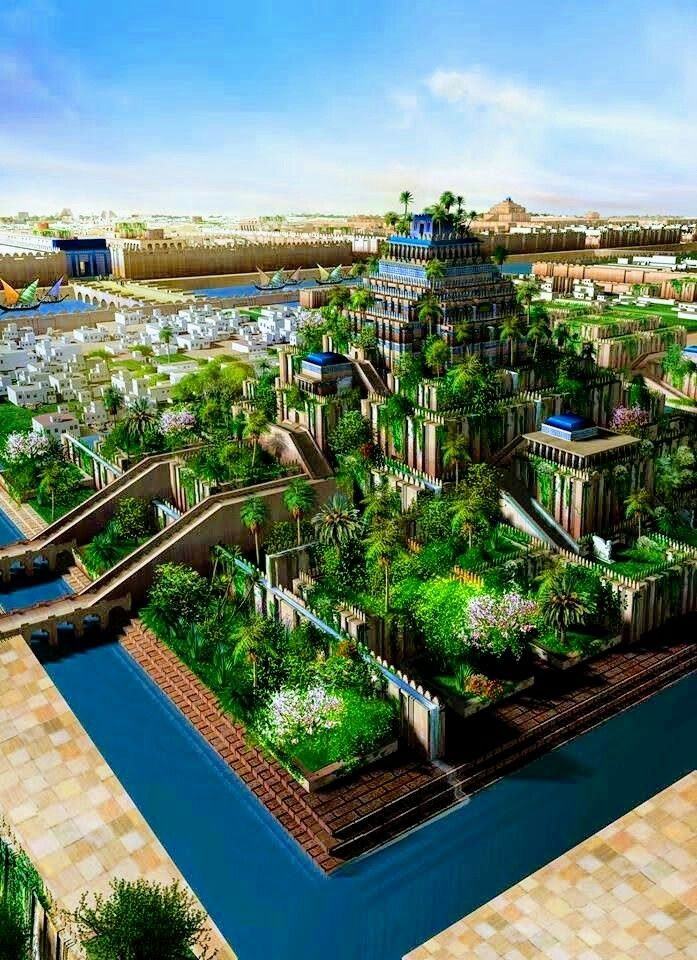URFA AND URFA NAMES IN THE OLD TIME;
According to the rumors, it is said that the ancient Greeks Enoch (Enoch = Hermes = Idris) taught people to build cities and that 180 cities were established in his time, the smallest of which was Urhai, or Orhay, in other words, Urfa.
According to this rumor, since the prophet Idris came before Noah, Urfa was established before the flood of Noah. Like the whole world in Noah's Flood, Urfa was devastated. But after the flood, the world was re-established and Urfa took its place in history.
Again, as it is told, Nemrut, who ruled in Babylon after Noah's Flood, had built three cities. One of them is the city of Urfa. This city was named Arach first, and later Erech, Orhay, Edessa and Ruha over time.
In the first ages of history, the people of Urfa were the ancient Chaldeans or the Arameans and Assyrians who were the extensions of the Babylonians. The Arameans and Assyrians were descended from the Chaldeans and Babylonians. The name Urhai or Orhay is the name given by the Aramaic-Assyrians, who were the first inhabitants of Urfa.
The Helens who came to Urfa later gave the name Edessa. The name Edessa given by the Hellenes means "plenty of water". Urfa was a city with plenty of water due to the Karakoyun (Daysan) stream flowing through it and the boiling springs.
Urfa is also named "Kaliruha", which means beautiful fountain in addition to the name of Edessa. After the conquest of Islam, the Kali syllables of Kaliruha were omitted by the Muslim Arabs and only ―Ruha syllables were used.
According to a second rumor, the word Orhay was changed slightly and it was called Ruha. Thus, the city was called Ruha by the Muslims after the conquest of Islam. It started to be called Urfa in the Ottoman period.
In another rumor, the conversion of the name Orhay to Urfa seems more appropriate. The windowsills of the churches in Urfa are decorated with the motif of snakes with two horns intertwined. These snake motifs are seen in churches that are still intact today.
It is accepted that such snake motifs show that there was also a snake cult in Urfa. Therefore, it is even suggested by some historians that the founder of Urfa was "Orhay the son of the serpent". Urfa was an important city of the old Osrhoene and the new Land-i Mudar.
When Imadeddin Zengi (1127-1146) conquered Urfa in 1144, Basil Bar Şumana, who was the Yakubi Metropolitan of Urfa, was the first person to accept that the city called Orhay, that is Urfa, between the Euphrates and Tigris rivers, was the city of Ur.
Before him, no one had said that the city of Orhay (Urfa) was Ur of the Chaldeans. "Ur" meant city, and "Chaldean Ur"
It meant the city of the Chaldeans. The people of Urfa of that period were also Chaldeans.
It can be definitely considered that the Sumerians, who held Mesopotamia around 4000 BC, also ruled in Urfa. Urfa,
From the day it was founded until the period when it began to live in the kingdom (132 BC-244 AD), it gained a different appearance from other neighboring cities.
Along with some states that lived and established in the region thousands of years ago, Urfa continued to exist as a city-state subject to the great state that dominated the region in the course of history.
Urfa region, BC. The Sumerians, Assyrians, Hittites, Chaldeans, Arameans, later Macedonians, Romans, Medes and Persians lived and dominated the period for centuries.
During the excavations around Urfa, it was found that there are many mounds belonging to the old bronze age such as Kurban Höyük, Lidar Höyük, and Titriş Höyük. These give us solid information about the history of Urfa.
B.C. III. It is accepted that the city of Hurri, which was one of the cities of the Hurrians in the thousand years, is located in the place of today's Urfa City. Therefore, the capital of the Hurrians is also Hurri City, Hurra (Urfa).
It is said.
So, Urfa was known as the capital of the Hurrians with the name Hurra about 1500 years ago. Again BC. II. In the millennia, Urfa was conquered by the Mitanni who gained strength in the region.
passed. B.C. II. This region, which was dominated by the Hittites in the thousand years, was invaded by the Arameans after the collapse of the Hittites. After the Assyrians gained strength, the Assyrian king III as Urfa (Osrhoene) region. During the time of Salmanasar (859-824 BC) it became an Assyrian state in 857.
Later, BC. The Urfa region, which was dominated by the Medes in the VI century, followed by the Persians and whose people were Assyrians, came out of Persian rule when Alexander the Great invaded Urfa in 331 BC and came under Hellenic rule. (To be continued)
References;
Gregory Abu‘l-Farac,
Bar Hebraeus, History of Abü‘l-Farac.
Aleppo Province Yearbook, 1310.
Segal, ibid, p. 152
E. Honigmann, ―Urfa Islamic Encyclopedia
Segal, Edessa, translator. Prof. Dr. Ahmet Arslan, Istanbul 2002
Jun: Mazdek Al Hamadani















